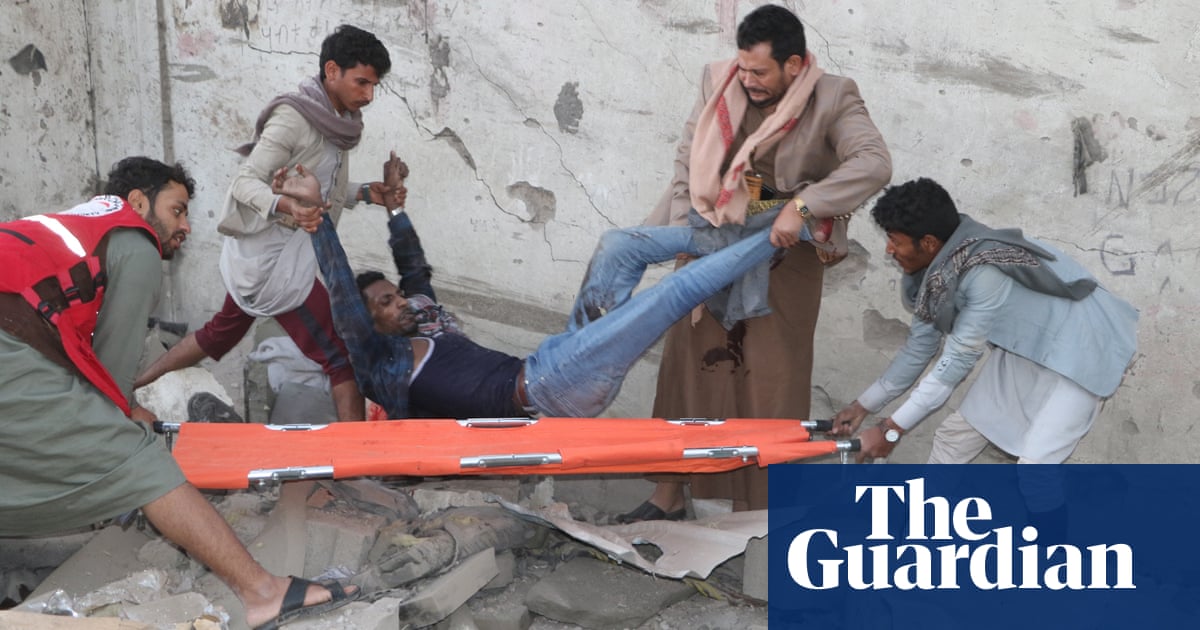“I am the candidate of peace,” Donald Trumpdeclared on the campaign trail last November. Three months into his presidency, not only is the war in Ukraine continuing and the war in Gaza restarted, but in Yemen, the number of civilian casualties caused by US bombing is rapidly and deliberately escalating.
Sixty-eight were killed overnight, the Houthis said, when the US military bombed a detention centre holding African migrants in Saada, north-west Yemen, as part of a campaign against the rebel group. In the words of the US Central Command (Centcom), its purpose is to “restore freedom of navigation” in the Red Sea and, most significantly, “American deterrence”.
A month ago, whenUS bombing against the Houthis restarted, the peace-promising Trump pledged that “the Houthi barbarians” would eventually be “completely annihilated”. It is a highly destructive target, in line perhaps with the commitments made by Israeli leaders to “eliminate” Hamas after 7 October, and certainly in keeping with statements from Trump’s defence secretary, Pete Hegseth, that the US military must focus on “lethality, lethality, lethality”.
Photographs from Almasirah, a Houthi media organisation, showed a shattered building with bodies inside the wreckage. TV footage showed one victim calling out for his mother in Amharic, the official language of Ethiopia. It is not immediately obvious they were material to the Houthi war effort, in which the group has attacked merchant shipping in the Red Sea and tried to strike targets in Israel.
That the Houthis have sought to fight on behalf of Palestinians in Gaza is not in dispute but what has changed is that the US military response –joint US and UK airstrikeswhen Joe Biden was in the White House – has escalated. The data clearly suggests that previous restraints on causing civilian casualties have been relaxed.
Approximately 80 Yemeni civilians were estimated killed and 150 injuredin a bombing raid on Ras Isa porton 18 April, according to the Yemen Data Project, a conflict monitor. The aim, Centcom said, was to destroy the port’s ability to accept fuel, whose receipt it said was controlled by the Houthis, and, the US military added, “not intended to harm the people of Yemen” – though the country is already devastated by 11 years of civil war. Half its 35 million peopleface severe food insecurity.
So far, theTrump administrationbombing campaign, Operation Rough Rider, is estimated to have caused more than 500 civilian casualties, of whom at least 158 were killed. Compare that with the previous campaign, Operation Poseidon Archer, which ran under Biden from January 2024 to January 2025: the Yemen Data Project counted 85 casualties, a smaller number over a longer period.
Parties in war are supposed to follow international humanitarian law, following theprinciple of distinctionbetween military and civilian targets, and respecting theprinciple of proportionality, where attacks that cause excessive civilian casualties relative to any military advantage gained are, in theory, a war crime.
The clear signs from the US campaign in Yemen are that it is following a looser approach, mirroring the unprecedented level of civilian casualtiesin the Israel-Gaza war. It is hardly surprising, given that Hegseth has already closed the Pentagon’s civilian harm mitigation office, which handled policy in the area, and the related Civilian Protection Center of Excellence, responsible for training.
That could make it difficult for traditional allies to assist. Whereas the UK participated in Poseidon Archer, British involvement in the latest operation has gone from minimal to nonexistent. No air-to-air refuelling was provided in the most recent attacks, the UK Ministry of Defence said, unlike in March.
In justification, Centcom says that after striking 800 targets, Houthi ballistic missile launches are down 69% since 15 March. But one figure it does not cite is that transits of cargo ships in the Red Sea during March remain at half pre-October 2023 levels,according to Lloyd’s List. A broader peace in the region may prove more effective in restoring trade than an increase in demonstrative violence.
